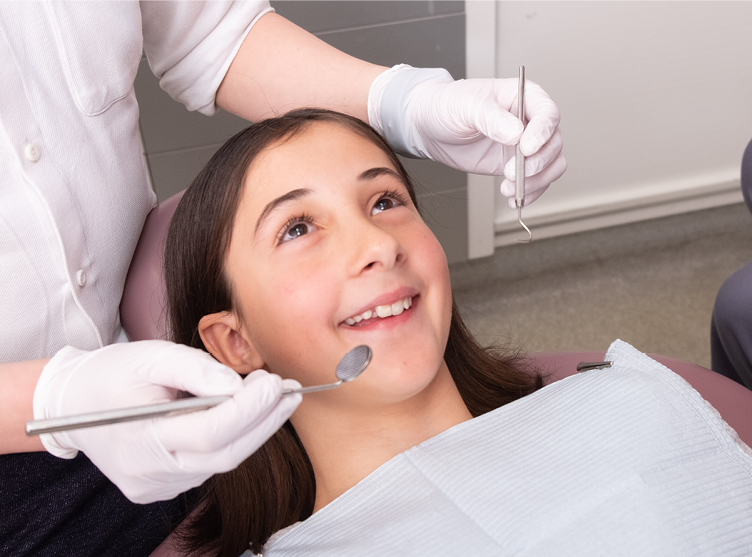A Biased View of Legacy Orthodontics
A Biased View of Legacy Orthodontics
Blog Article
Some Known Questions About Legacy Orthodontics.
Table of ContentsThe Main Principles Of Legacy Orthodontics Rumored Buzz on Legacy OrthodonticsThe 10-Second Trick For Legacy OrthodonticsThe Facts About Legacy Orthodontics UncoveredLegacy Orthodontics Fundamentals Explained
In enhancement, we use adjustable treatment timetables, versatile payment options and a fun, enjoyable experience.An orthodontist is a dentist educated to identify, stop, and deal with teeth and jaw abnormalities. They remedy existing conditions and are trained to recognize problems that may develop in the future. Orthodontists collaborate with people of all ages, from youngsters to grownups. Individuals commonly associate a perfect smile with healthiness.
Malocclusion, or misaligned teeth, can lead to oral issues, consisting of dental caries, periodontal disease, and difficult or excruciating chewing. Yet not everybody is birthed with straight teeth. If you have a negative bite or large spaces between your teeth, you might want to speak with a dental expert specializing in orthodontic treatment.
7 Simple Techniques For Legacy Orthodontics
( Picture Credit: DigitalVision/Getty Images) Orthodontists use taken care of and detachable oral devices, like braces, retainers, and bands, to alter the setting of teeth in your mouth. Orthodontic treatment is for dental irregularities, consisting of: Jagged teethBite problems, like an overbite or an underbiteCrowded teeth or teeth that are also much apartJaw misalignmentThe objective of orthodontic therapy is to enhance your bite.
A healthy and balanced bite ensures you can eat, chew, and speak effectively. While you might consider orthodontists as generally for youngsters or young adults who require dental braces, they can fix dental troubles at any age. Orthodontists attend college, dental institution, and orthodontic institution. After college graduation, they invest 2 or 3 years in an orthodontic residency program.
All orthodontists are dental experts, however not all dental practitioners are orthodontists. Orthodontic residency programs use extensive, focused direction for dental specialists. They concentrate on 2 locations: Just how to effectively and securely move teeth Just how to effectively direct development in the teeth, jaw, and faceOnce an orthodontist has completed training, they have the choice to become board licensed.
The Greatest Guide To Legacy Orthodontics
Imbalance, or malocclusion, is the most usual reason people see an orthodontist. It is genetic and is the result of size distinctions between the upper and lower jaw or in between the jaw and teeth. Malocclusion results in tooth congestion, a twisted jaw, or uneven bite patterns. Malocclusion is normally treated with: Your orthodontist attaches metal, ceramic, or plastic square bonds to your teeth.
Some individuals need a headwear to aid move teeth into line with stress from outside the mouth. A retainer is a custom gadget that maintains your teeth in location.
They're frequently made use of on kids. They can develop extra space in the mouth without having to draw teeth. If you have a significant underbite or overbite, you could require orthognathic surgical treatment (likewise called orthodontic surgery) to extend or reduce your jaw. Orthodontists use cables, medical screws, or plates to sustain your jaw bone.
You might require to see an orthodontist if you have: Crowding or otherwise enough room for all of your teethOverbite, when your upper teeth come over your bottom teethUnderbite, when your bottom teeth are as well far forwardSpacing or issues with gapsCrossbite, which is when your upper teeth fit behind your bottom teeth when your mouth is closedOpen bite or a vertical void in between your front bottom and top teethMisplaced midline, when the facility of your base and upper teeth do not align Correcting an oral malocclusion can: Make biting, eating, and talking easierImprove the balance of our face and your general appearanceEase discomfort from temporomandibular joint disordersSeparate your teeth and make them simpler to clean, assisting prevent dental caries or cavities It's frequently a dentist that initially notifications misaligned teeth during a routine exam.
Getting My Legacy Orthodontics To Work

Throughout your very first orthodontic appointment, you'll likely have: A dental examPhotos taken of your face and smileDental X-raysPanoramic (360 level) X-rays of your face and headImpressions to create mold and mildews of your teethThese tests will certainly aid your orthodontist know how to proceed with your treatment. leesburg clear braces. An orthodontist is a dentist who's had training to treat your teeth and jaw
An orthodontist is focused on your bite, so something like a broken tooth would be managed by a dentist. Orthodontists are concentrated on your bite, or the way your teeth fit with each other, and the straightness of your teeth.
Ever wondered exactly how celebrities constantly seem to have flawlessly aligned teeth? The answer often depends on the proficient hands of an orthodontist. What specifically does you can try here an orthodontist do? Orthodontists are dental professionals who concentrate on remedying irregularities in the teeth and jaws. Their knowledge goes past just producing a gorgeous smile; it encompasses improving your total oral health and feature.
Some Known Incorrect Statements About Legacy Orthodontics

While braces are one of the most generally recognized orthodontic treatment, orthodontists have a diverse toolkit at their disposal. The particular approach chosen depends upon the severity of the situation, the patient's age, and individual preferences. These tried-and-true braces utilize a system of brackets bonded to the teeth and connected by wires.
Clear aligners, like Invisalign, are a preferred alternative for patients seeking a more discreet therapy option. These detachable trays are customized to gradually change the teeth's position. Headgear might be made use of in combination with dental braces or aligners to use extra targeted forces, particularly for fixing jaw discrepancies. In cases of narrow jaws, palatal expanders can be used to produce room for proper tooth positioning.
Report this page